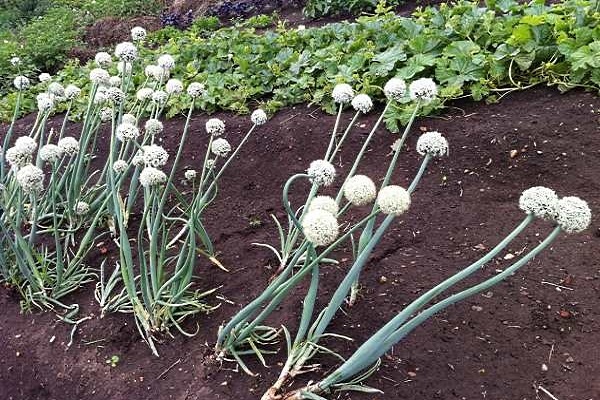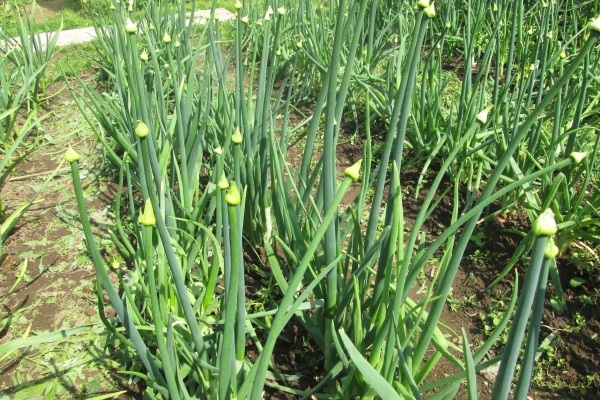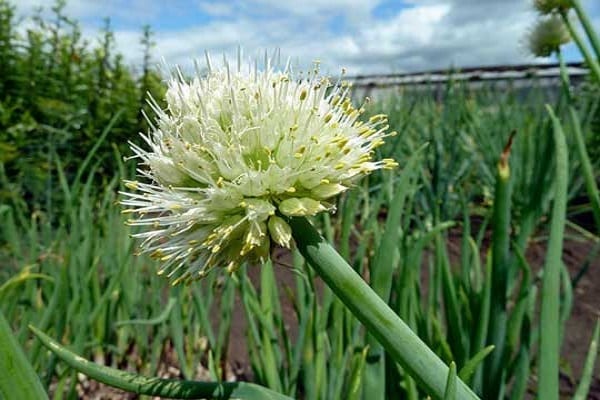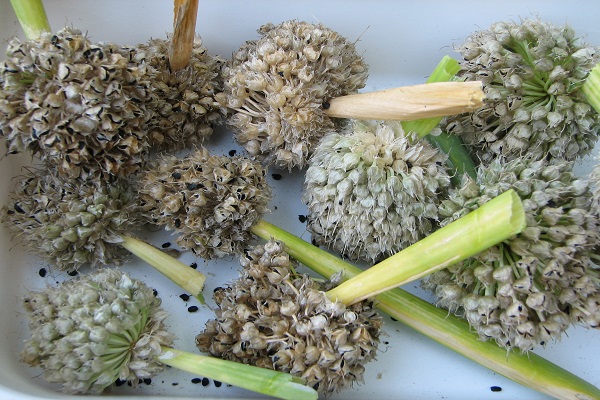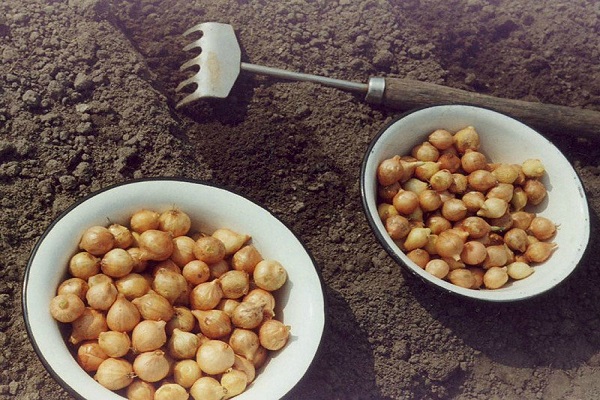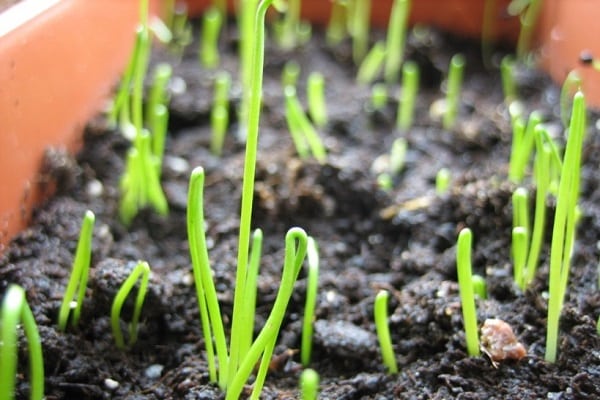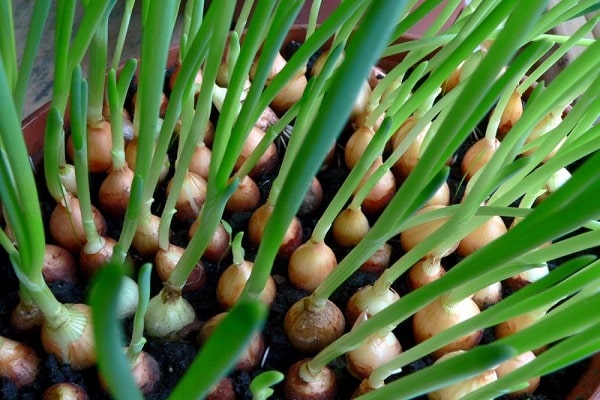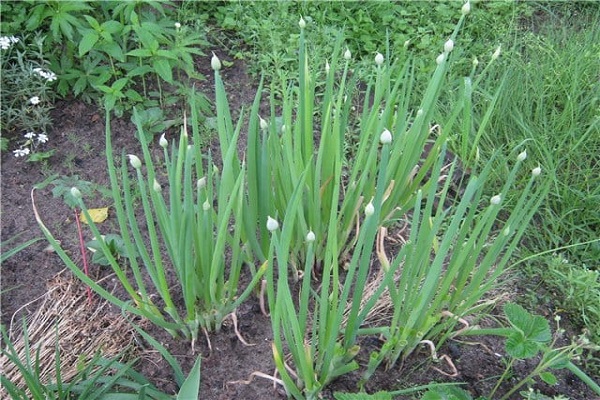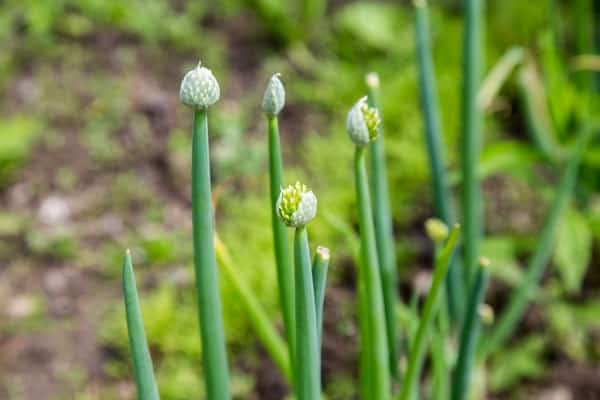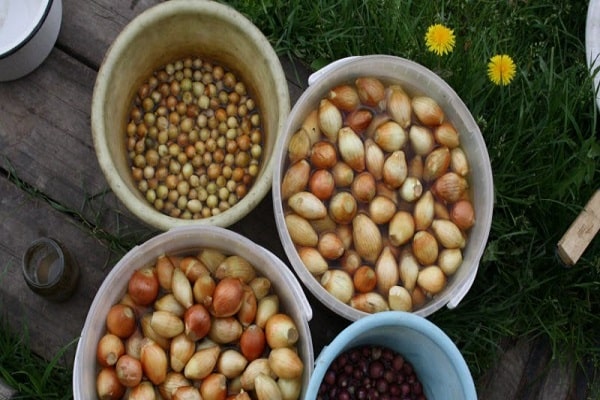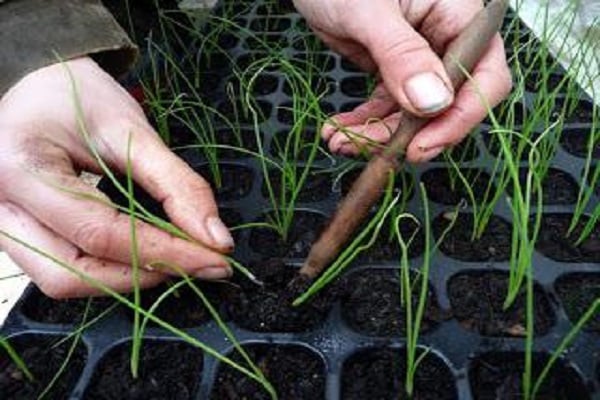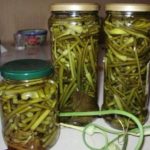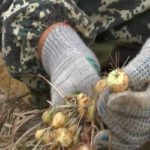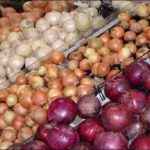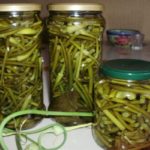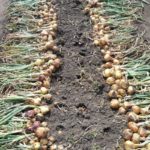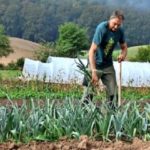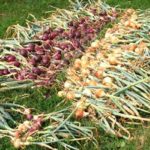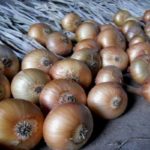Some summer residents do not know why the onion goes into the arrow, what needs to be done in this situation. Many of them eliminate the problem by removing the arrows, however, this method of dealing with them does not allow obtaining a rich harvest of bulbs. If the summer resident wants grow full-fledged, large bulbs, he needs to prevent the process of formation of arrows. This is done taking into account several nuances of growing onions.
What are the dangers of shooting a bow?
The onion arrow is an inflorescence that is responsible for the formation of seeds after the flowers appear. Therefore, the peduncle is designed to carry out the function of onion propagation. Experienced gardeners claim that if onions shoot, one should expect consequences such as the formation of underdeveloped bulbs.
Therefore, so that when growing onions suitable for food, the arrow does not form, but the head forms, optimal conditions for its growth and development should be created. To do this, you need to know what factors contribute to the formation of a bow arrow.
Why does the bow go into the arrow?
There are several factors that influence whether the bow goes into the arrow or not. These include the following reasons:
- use for planting a large bulb, the diameter of which exceeds 3 centimeters;
- poor storage conditions for planting material, characterized by high humidity, the presence of sharp temperature fluctuations;
- early planting of material, that is, planting in unheated soil.
The likelihood of bow arrows appearing is quite high under the influence of any of these factors.
Seed storage
To get a good bulb harvest, it is very important to store the seeds correctly. To do this, they should be stored at a temperature of 1–3 degrees. Low temperatures will not affect the quality of the plant in any way, since it is resistant to frost. On the contrary, higher temperatures will have a negative impact on it: the plant will be weaker and the harvest will be smaller.
You can grow a turnip from seeds only in two stages. First of all, the seeds are sown to grow sets - small bulbs with a diameter not exceeding 2-3 centimeters. The resulting seedlings are stored in the basement in winter, and the humidity in the room should not be too high.Otherwise, the seedling will germinate and send out an arrow in the garden bed. Then the set is planted on the turnip. The only exceptions to this rule are hybrid varieties, which allow a summer resident to grow a full-fledged bulb in 1 year.
Planting material size
To avoid the appearance of onion shoots, it is necessary to choose the right seed. Bulbs for planting should be distributed according to their size. Only sets - small bulbs, suitable for planting on turnips.
Onions whose diameter exceeds 3 centimeters should be eaten. If you have large onion bulbs and want to get feathers, they can also be planted in a separate place on your summer cottage.
Experienced summer residents claim that if the size of the planting material - seedlings - does not exceed 1 centimeter, such plantings will not bolt. This feature persists during storage without creating special conditions.
Landing dates
Bulbs up to 3 centimeters in diameter will not produce shoots if they are planted in late April. You need to plant the seedlings in warm soil, but if the soil is not warmed up well enough, the likelihood of froth development increases.
If you plant the seedlings late, the bulb may not grow fully formed. Such plants are often exposed to various diseases and stop growing and forming a head.
How to prevent bow shooting?
To prevent the appearance of shoots, the crop can be planted for the winter. But this should only be done in those regions that have warm winters. If there are frosts in winter, it is better to use other methods of combating the appearance of shoots.To reduce the risk of vegetable bolting, remember to follow some recommendations:
- For cultivation, you only need small bulbs - sets, otherwise arrows will appear, which will need to be trimmed in the future;
- you need to prepare the planting material personally, since when purchasing it, it is not known how the seed was stored or whether it needs to be processed before planting;
- if the set has been purchased, before planting it must be heated on a wooden substrate on a radiator for 20 days;
- if seeds were purchased, they should be treated with potassium permanganate.
All of these tips will help you plant bulbs in the spring, reducing the likelihood of bulbs developing.
The bow has gone into the arrow: what to do?
If the onion begins to shoot, you must immediately remove the formed peduncle. It should be cut as close to the neck as possible. It is worth considering that in this case the arrows will be constantly formed, and each of them will need to be removed immediately. After the shoots have formed, the onion can be grown for greens, but the onion will not be large. Because of this peculiarity of the crop, you cannot plant an onion that has previously bolted. It can be identified by the presence of a thick neck.
To reduce the likelihood of bolts occurring, some gardeners use two varieties of onions for planting. In this case, you need to find out from the seller which of them is best to take for growing in a particular region. Even if one variety has gone into feathers, the second will be able to produce a full harvest of bulbs.
If arrows appear on the onion, most summer residents advise not to throw them away, but to use them to complement various dishes, prepare rolls or salads. This ingredient makes the dish piquant and gives it an unusual taste.
Advice from an experienced summer resident
Many experienced summer residents have created a set of special rules that allow them not only to eliminate the risk of a peduncle, but also to benefit from the arrows that appear:
- First of all, summer residents recommend growing your own seedlings and not trusting markets. The fact is that the buyer remains unknown how this planting material was stored. Most likely, some factor was disturbed, and in the process of growth the turnip goes into the arrow.
- If the plant goes into arrows, you can immediately dig it up and use it for food or tear off the arrows of the onion at their base. In the first case, the harvest will be a small turnip, and in the second, the stems of the peduncle can become an excellent ingredient for preparing main courses and salads.
- If the onion that shoots has nevertheless formed a full-fledged large head, it should be consumed immediately, since the shelf life of such a crop is minimal.
- If a person doesn’t like the taste of onions and doesn’t want to preserve them or add them to fresh salads, the flower stalks can be used as fertilizer by placing them in the garden after picking.
- To grow onions, you should use oatmeal - bulbs whose diameter does not exceed a centimeter. Such planting material almost never forms shoots, even if stored improperly. The only difficulty in growing oatmeal is storing it in cool rooms, since at elevated temperatures it quickly dries out.
- It is recommended to plant oat before winter.
- Plants should be planted in the ground later than April 25th.
- If the set has been purchased, it must be warmed up before planting.
If you follow all the listed rules of experienced summer residents, as well as recommendations to minimize the risk of frog formation, you can get a rich harvest of onion turnips. The resulting harvest from non-shooting bulbs has a long shelf life, excellent taste and nutritional qualities. If, nevertheless, arrows appear on the plant, such a planting should be grown to obtain tasty, healthy, juicy greens.

